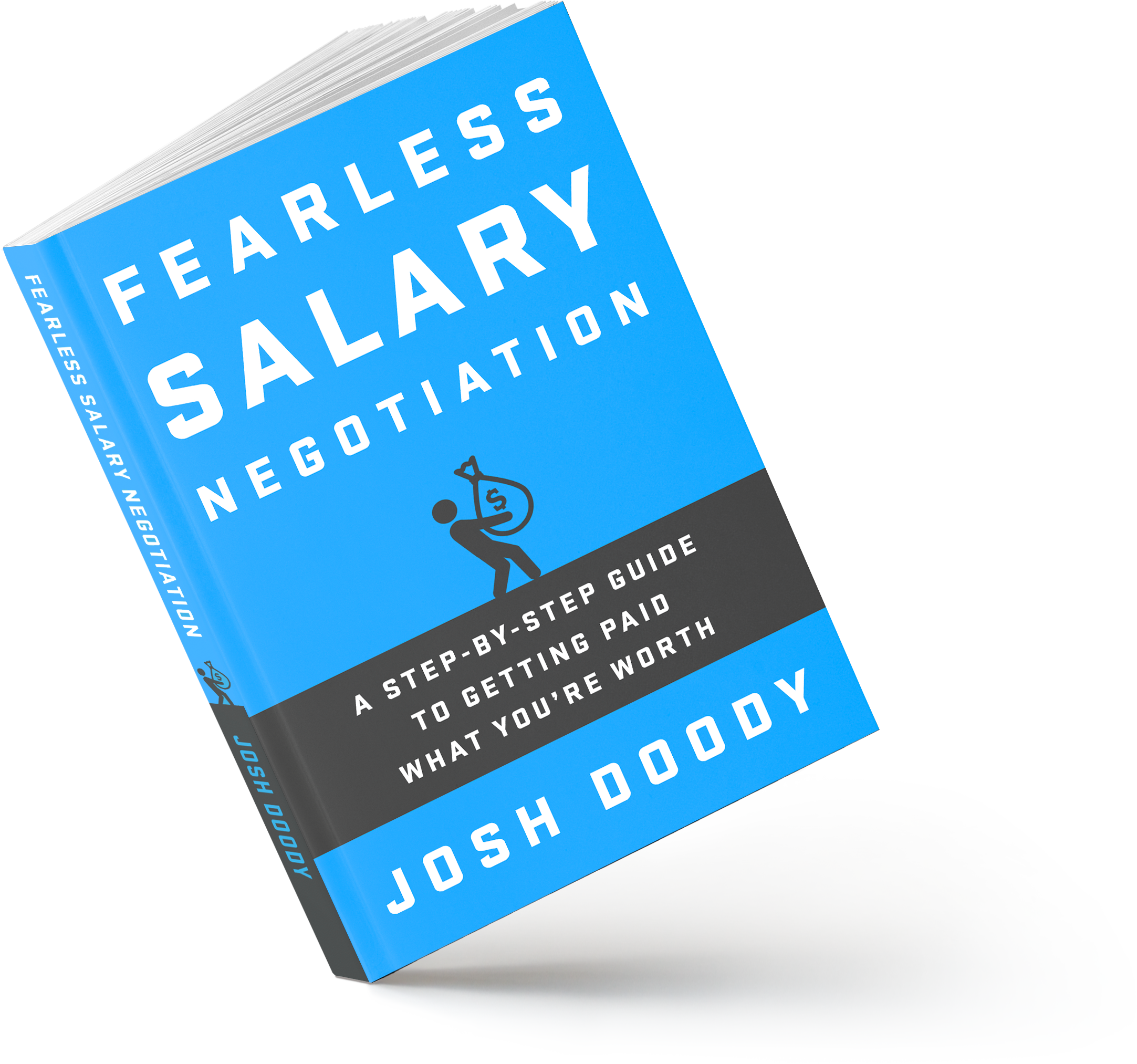
How to determine your counteroffer when negotiating starting salary
How to determine the right counteroffer for your specific situation
A step-by-step method to determine the right counteroffer for your specific situation.

A step-by-step method to determine the right counteroffer for your specific situation.
By waiting for them to make the first offer, you learned more about the range of salaries they’re willing to pay and gave yourself an opportunity to formulate a counter based on their offer so that you can get as close as possible to the maximum they’re willing to pay.
So how do you determine your counter? There are two scenarios we need to address. The most common scenario is when they offer at least your minimum acceptable salary. The other scenario is when they offer less than your minimum acceptable salary.
Let’s start with the more common scenario.
Most of the time, they’ll offer something at or above your minimum acceptable salary. This makes sense because your minimum acceptable salary is a conservative number you chose that represents the minimum it would take to get you in the job, whereas their offer is designed to be high enough to entice you to take the job while leaving them some wiggle room to negotiate if you counter.
Since you’ve already got your minimum acceptable salary locked up, you can turn your focus to maximizing your salary before your tenure at the company begins. The first step to maximizing your salary is to make a counter that pushes the company higher into the range of salaries that they’re willing to pay you while not pushing too hard. So how do you do that?
A good range for a counter is between 10% and 20% above their initial offer. On the low end, 10% is enough to make a counter worthwhile, but not enough to cause anyone any heartburn. On the high end, 20% is a pretty big difference between their offer and your counter, but it’s not so big that it will come across as excessive when used in the right situation.
We need to determine where in the typical counter range—between 10% and 20%—you should counter. This is where your aggression factor comes into play. You just add your aggression factor to 10% and that’s how much you should counter above their offer. In the example we did in that section, your aggression factor was 5, so your counter would be 15% above their initial offer (10% plus 5% for your aggression factor).
Let’s look at an example. Say your minimum acceptable salary is $50,000 and the company offered you $55,000. They met your minimum, so now you just need to determine an appropriate counter. Your aggression factor is a 5, which means your counter should be 15% above their offer. In this case, 15% of $55,000 is $8,250, which means your counter should be $63,250. It can be a little easier to work with round numbers, so you might round to $63,500.
Your goal for the negotiation has now shifted from “maximize my salary before I start this job” to “try to get my minimum acceptable salary or more if possible”. It’s frustrating, but this is why you prepared by choosing your minimum acceptable salary in advance—you know the salary you must get to in order to take the job.
You have two main options in this situation. The most obvious option is to simply tell the recruiter or hiring manager that you can’t accept less than your minimum acceptable salary and see if they’ll agree to that salary. This is the most direct route, but it has the downside that it caps your possible salary at your minimum acceptable salary. So before you do that, let’s see if there’s still a way to get more than your minimum acceptable salary.
The real question is whether you can reasonably counter a high enough salary that a negotiation will lead to a salary greater than your minimum acceptable salary. Here’s our rule of thumb: Use the method in the previous section to determine what your counter would be. If that number is greater than your minimum acceptable salary, then that is your counter. If that number is less than or equal to your minimum acceptable salary, then just tell the recruiter or hiring manager that you can’t accept less than your minimum acceptable salary.
Let’s look at two examples to illustrate this point. For both examples, let’s say your minimum acceptable salary is $50,000 and your aggression factor is 5. That means your counter will be 15% above their offer unless their offer is so low that your counter isn’t at least $50,000.
Scenario 1—When your counter exceeds your minimum acceptable salary: Let’s say they offer you $45,000. Fifteen percent of $45,000 is $6,750, which means your counter would be $51,750, and you should round that up to $52,000. That’s above your minimum acceptable salary of $50,000, so you will counter that amount. Not only might you get a little more than your minimum acceptable salary, but you’ve also left the door open to negotiate other benefits (signing bonus, vacation days, etc.) even if you end up at your minimum acceptable salary.
Scenario 2—When your counter would be less than your minimum acceptable salary: Let’s say they offer $40,000. Fifteen percent of $40,000 is $6,000, which means your counter would be $46,000. That’s below your minimum acceptable salary of $50,000, so you would not counter that amount. Instead, you would say, “I’m sorry, but I can’t accept less than $50,000 for this job.” This may very well be the end of your negotiation, so you’re giving them one last shot to meet your minimum acceptable salary.
If they meet your minimum, then you’ve got the job at that salary. If they can’t meet your minimum, then you couldn’t come to terms and you should probably walk away. This can be a very difficult decision, but this specific scenario is why it was so important to set your minimum acceptable salary before you began negotiating. You were more objective then, and it’s probably best to trust your objectively determined minimum in this situation.
The nice thing about this method is that your counter is based on their initial offer, and it is confined to a reasonable range of 10% to 20% above their offer. Further, the way you chose whether to counter closer to 10% or 20% above their initial offer was based on your assessment of how badly the company needs you as compared to how badly you need the job.
A counter of 10% more than the company’s initial offer simply isn’t a big enough difference to raise any eyebrows. And if your counter is 20% above their initial offer, that’s because you’ve determined that the company desperately needs you (10 out of 10 on the “How badly do they need you?” question) while you don’t really need the job at all (0 out of 10 on the “How badly do you need this job?” question).
As long as you have realistically evaluated those two questions, your counter is in a reasonable range.
Congratulations! You’ve determined your counter, and you can feel good knowing that your method for calculating it was logical and reasonable. This is a counter that you can deliver with confidence.

I'm Josh Doody, a professional salary negotiation coach who helps High Earners negotiate their job offers. On average, High Earners improve their first-year compensation by $47,273 with my help.
Apply for a free 15-minute intro call to learn how I can help.